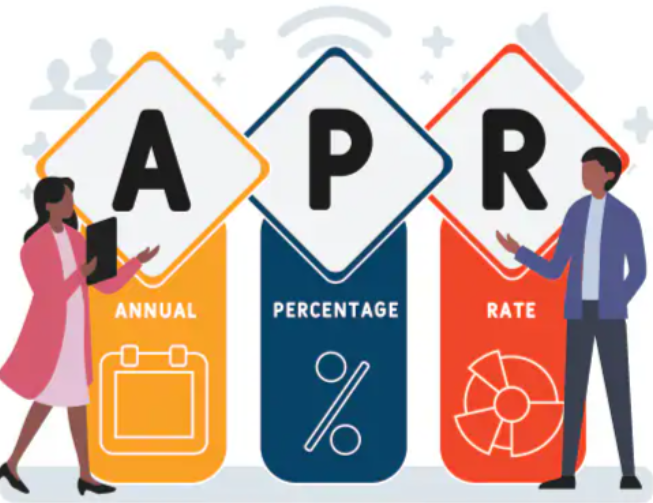Introduction
Credit Card APR Cap 2025 is becoming one of the most talked-about topics in U.S. finance. With interest rates on credit cards now averaging more than 21%, millions of American households are struggling with high monthly payments and growing debt burdens. Researchers estimate that if Donald Trump’s proposed cap on credit card APR is implemented, Americans could save over $100 billion in interest charges.
This idea has sparked debates across political, financial, and consumer circles. On one hand, families see hope for relief from sky-high interest rates. On the other, banks and credit card issuers worry about reduced profits and stricter lending requirements. Whether you’re a student paying off everyday expenses or a parent juggling multiple credit cards, understanding how this proposal might reshape household budgets is essential.
In this article, we’ll explore what the Credit Card APR Cap 2025 means, why it matters, and how it could affect everyday Americans.
Background: Why Credit Card APR Matters
| APR Rate | Monthly Interest | Annual Interest |
|---|---|---|
| 20% APR | $83 | $996 |
| 18% APR | $75 | $900 |
| 15% APR | $63 | $756 |
APR, or Annual Percentage Rate, is the interest rate you pay on borrowed money. For credit cards, it determines how much extra you’ll owe if you carry a balance from month to month.
Over the past decade, U.S. consumers have seen credit card APRs steadily climb. Before the pandemic, average APRs hovered around 15–17%. By 2025, they’ve surged past 21%, the highest in decades. For a household with $10,000 in credit card debt, that extra percentage adds up to thousands of dollars each year.
This surge is tied to broader economic shifts. The Federal Reserve raised interest rates repeatedly between 2022 and 2023 to control inflation, which pushed borrowing costs higher. While mortgages and car loans also became more expensive, credit cards were hit hardest, since they carry variable interest rates that adjust quickly.
The result? Families are paying more in interest than ever before. For many, minimum payments barely cover the interest, making it nearly impossible to reduce the principal balance. That’s why discussions about an interest rate cap resonate so strongly with struggling Americans.
Trump’s Credit Card APR Cap 2025 Proposal Explained”
Donald Trump’s proposal to cap credit card interest rates has brought the issue into the spotlight. While details are still under discussion, the idea centers around limiting the maximum APR credit card companies can charge—potentially to around 10–15%.
The logic behind the cap is simple: families should not be trapped in endless debt cycles caused by excessively high interest rates. Proponents argue that such a move would make credit fairer and reduce predatory lending practices that often target vulnerable consumers.
Politically, the proposal also appeals to voters frustrated with big banks. After years of rising living costs, many Americans view credit card companies as profiting unfairly from household struggles. By pushing for an APR cap, Trump positions himself as standing with working-class families.
Of course, not everyone agrees. Financial institutions argue that capping rates would reduce their ability to lend, especially to higher-risk borrowers. If lenders can’t charge higher interest to offset risk, they may cut back on approvals, leaving some people without access to credit altogether.
Still, the proposal has shifted public discussion. Instead of debating whether rates are “too high,” the focus is now on what’s fair—and how much relief consumers deserve.
How the Credit Card APR Cap 2025 Could Save $100 Billion”
The headline number—$100 billion in potential savings—comes from researchers who analyzed how much Americans currently pay in credit card interest versus what they would pay under a capped APR.
Consider a family with $8,000 in revolving credit card debt. At today’s average APR of 21%, they might pay around $1,680 in interest annually if they carry that balance. If the APR were capped at 10%, the annual interest drops to just $800. That’s a savings of nearly $900 for one family in a single year. Multiply that across millions of households, and the total savings easily crosses $100 billion nationwide.
These savings don’t just help individual families—they ripple across the economy. Lower interest means consumers can spend more on essentials like housing, healthcare, and groceries. It also means faster debt repayment, which could improve overall financial stability.
Critics warn that while consumers save on interest, they may face reduced access to credit. For example, people with lower credit scores may find it harder to get approved for new cards. But for those already stuck with high balances, the math is simple: less interest equals more money in their pockets.
Potential Benefits for U.S. Consumers
If implemented, a credit card APR cap could bring significant benefits to American households:
Debt Relief: Millions could finally make progress on reducing balances instead of just covering interest.
Increased Spending Power: With less money going to banks, families could redirect funds to savings, investments, or daily needs.
Improved Credit Health: Paying off debt faster can raise credit scores, unlocking better financial opportunities.
Psychological Relief: The stress of being “trapped” in debt takes a toll. Knowing payments actually reduce balances can improve mental well-being.
For middle- and lower-income families, this change could be life-changing. Many juggle multiple cards just to cover basics like gas and groceries. An APR cap would provide breathing room and a path to financial stability.
Challenges and Criticisms
While the benefits are clear for consumers, there are challenges to consider:
Reduced Credit Access: Banks may tighten lending standards, approving fewer applicants.
Risk to Lenders: With lower profit margins, lenders argue they cannot cover the risk of lending to higher-risk borrowers.
Shift to Fees: Credit card issuers might increase annual fees or introduce new charges to offset lost interest income.
Economic Trade-offs: Some economists warn that restricting credit too much could slow consumer spending, a key driver of the U.S. economy.
These criticisms show that while the proposal could provide relief, it isn’t without complications. Policymakers must balance consumer protection with maintaining a healthy credit market.
Expert Opinions & Public Sentiment
Economists are divided. Some praise the idea as overdue, noting that U.S. credit card rates far exceed those in other developed
countries. Others caution that artificially capping rates could destabilize the lending market.
Public opinion, however, leans strongly toward support. Surveys suggest most Americans believe credit card rates are unfairly high. Many see banks as profiting from everyday struggles, especially during a time when inflation has already eroded household budgets.
Media coverage has amplified these voices, framing the debate as one between Wall Street profits and Main Street relief. For Trump, the proposal offers political momentum. For families, it sparks hope of genuine financial relief.
Conclusion: What Credit Card APR Cap 2025 Means for the Future
The Credit Card APR Cap 2025 debate highlights the tension between consumer protection and market realities. On one side, capping rates could save Americans $100 billion, offering relief to millions struggling with debt. On the other, it raises concerns about credit access and the long-term health of lending markets.
For consumers, the key takeaway is simple: rising APRs make debt more expensive than ever. Whether or not a cap becomes law, families should explore strategies to manage balances, negotiate lower rates, and avoid carrying unnecessary debt.
As the political and economic debates continue, one thing is certain: credit card interest rates remain a pressing issue for American households. The conversation around Trump’s proposal may evolve, but its impact on financial awareness is already clear.
Whether or not it becomes law, the credit card APR cap 2025 has already changed how Americans think about credit card interest.




